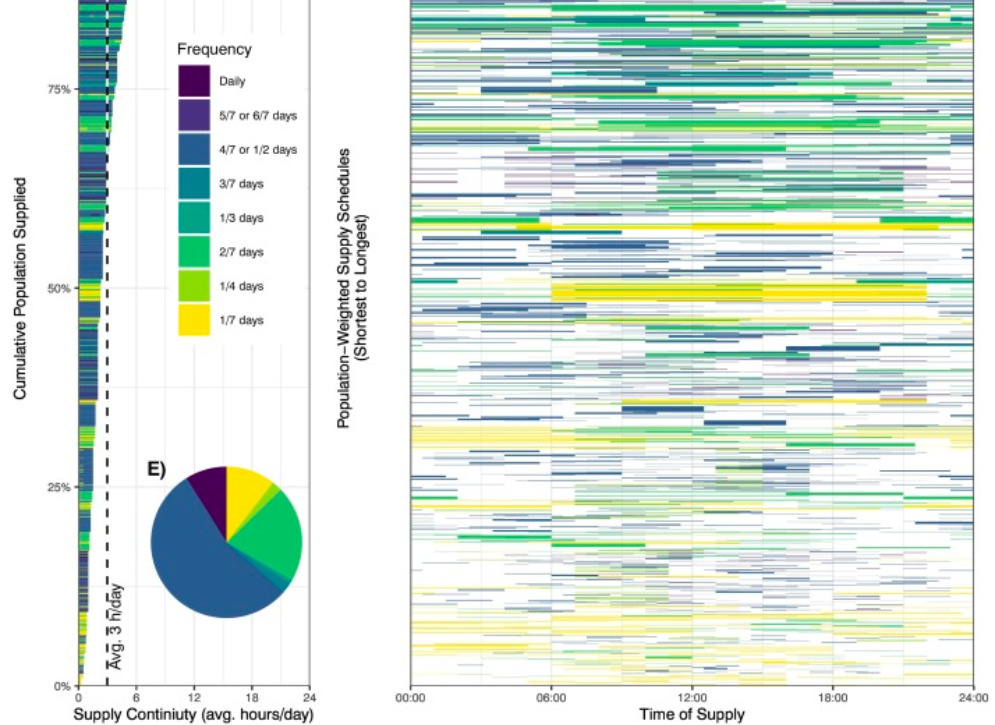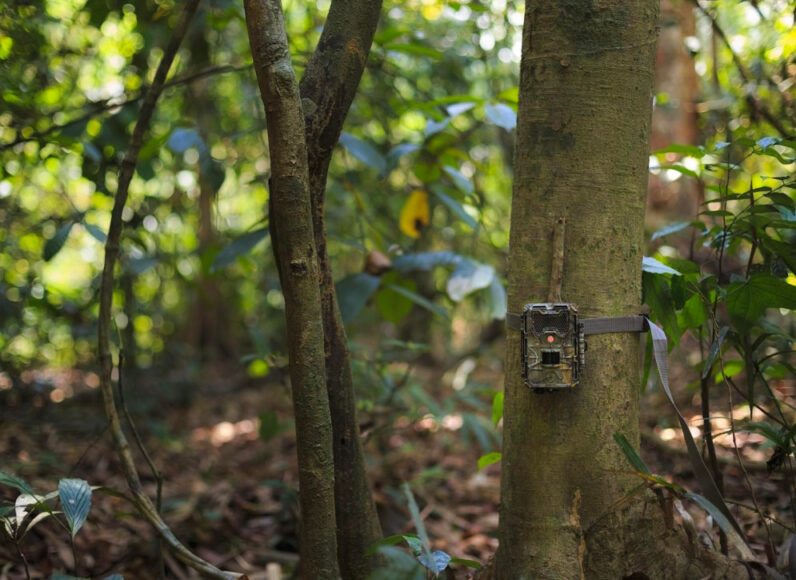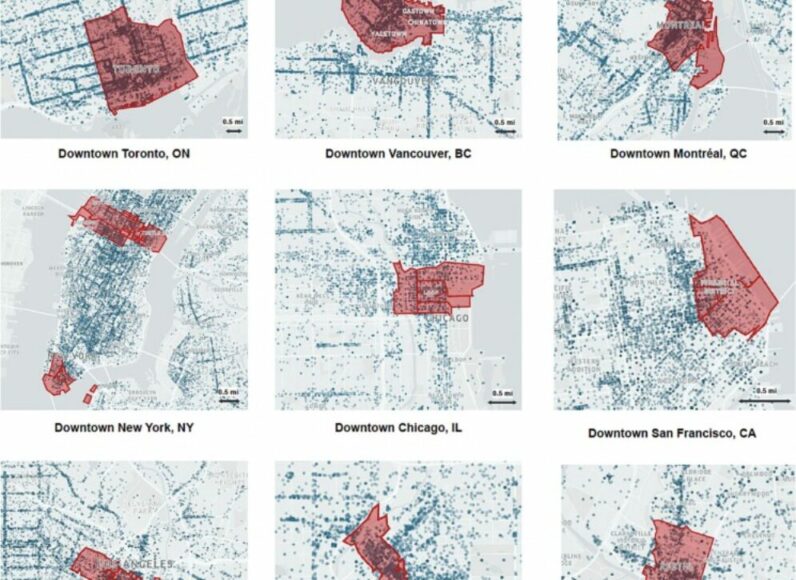By David D.J. Meyer, Saurabh Singh, Jitendra Singh, Manish Kumar, and Matthew He.
Science of the Total Environment
May 2023
Concerned by the negative effects of intermittent water distribution, Meyer et al. (2023) propose four methods to visually harness insights from intermittent supply schedules in two of the world’s most complicated intermittent systems.
In the first proposed method, the authors created a new way to visualize the varieties of supply continuities and frequencies within complicated intermittent systems.
In the second method, they quantified equality based on how uniformly supply continuity and frequency were divided between neighbourhoods and cities.
The article then proposes a third method, in which it uses census data and finds that neighbourhood wealth was inequitably correlated with the percent of households with piped connections.
Finally, the authors inferred hydraulic capacity from the coincidence of supply schedules.
Using Delhi and Bengaluru as examples, Meyer et al. demonstrate that researchers, operators, and regulators can and should use water supply schedules to assess equality, equity, and hydraulic capacity in predictable intermittent water supplies.









